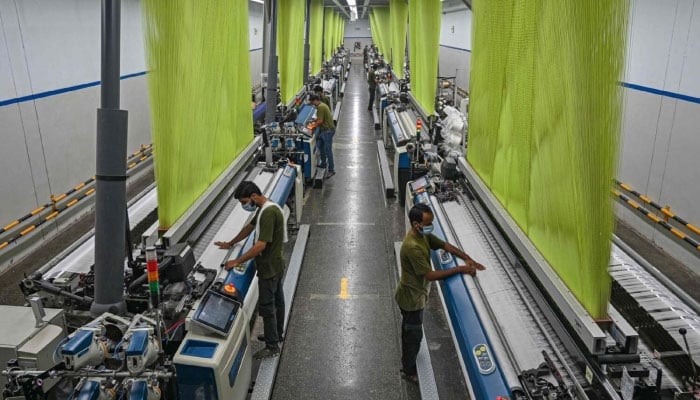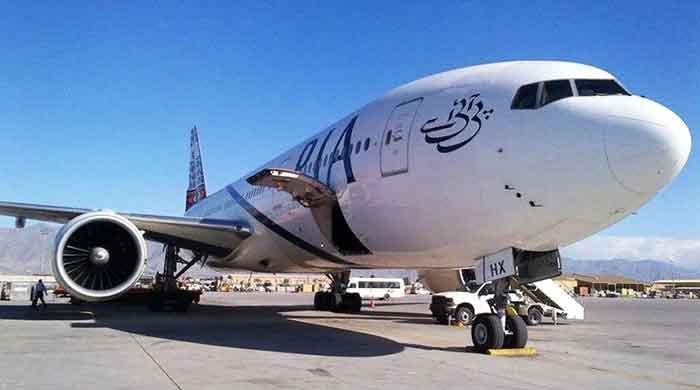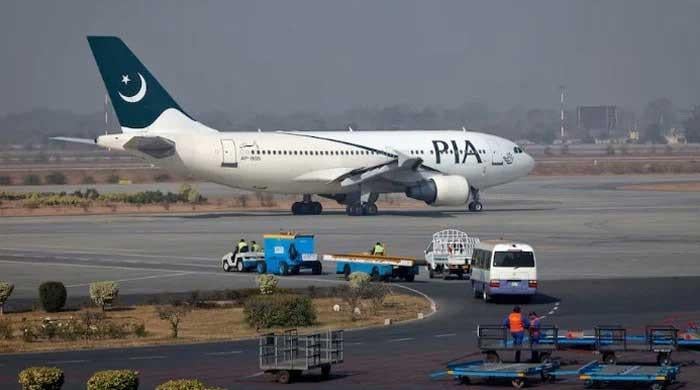Textile sector likely to face another gas tariff hike amid soaring LNG prices
Catastrophic consequences of high energy costs have forced many mill owners to close down their businesses
December 24, 2023

- Tariff on natural gas raised by over 60% since August 2022.
- Gas tariff expected to increase further in coming months.
- High energy costs also forced closure of industries.
LAHORE: Pakistan's textile industry, which is a key export sector of the country, is suffering from high energy costs and a weakening currency, becoming less competitive in the global market, The News reported Sunday citing industry officials.
Following a surge in the international prices of liquefied natural gas (LNG), the caretaker government raised the tariff on natural gas by more than 60% since August 2022.
The latest hike, effective from November 2023, has pushed the gas tariff to $10.847 per million British thermal units (mmBtu) for Punjab-based textile units and $9.739 for Sindh-based ones, compared to $6.5 in July 2022.
The gas tariff is expected to increase further in the coming months, as the Oil and Gas Regulatory Authority (Ogra) has linked it to the delivered ex-ship (DES) price of LNG, which rose by 10.11% for December 2023.
The gas tariff is poised to jump, maybe as high as $13 plus per unit, in ensuing months in line with RLNG rates announced by the regulator.
Not only has the rising cost of gas made the local textile industry uncompetitive in international trade, but the unwelcoming development has also put the export-oriented industry in a catch-22 situation as captive power cost exceeds grid-power rates.
According to analysts, most of the generation cost of captive power plants with such a high gas tariff has surpassed Rs45 per unit, which is more than the utility tariff for industry nowadays. In this challenging development, only efficient plants, having up to Rs38 per unit electricity cost, could be able to produce electricity with a high RLNG tariff. Only about one-fifth of the industry installed efficient plants in recent years in the Punjab province.
"If you are not able to produce in-house electricity due to high cost of generation, you would also be exposed to infrequent grid power, rendering the manufacturing process less efficient," according to an industry official.
"The next couple of months for the textile industry would be very difficult in terms of ensuring a competitive and dependable energy source."
Although the government provided the textile industry with subsidised RLNG at $9.0 per mmBtu, this rate was even above the regional average for countries such as India, Bangladesh and Vietnam. This single point reduced the competitiveness of the country’s exports. Furthermore, with the withdrawal of the regionally competitive tariff and the imposition of a fixed power tariff of Rs20/kWh earlier and now withdrawing it, the electricity cost from the national grid has also doubled.
The catastrophic consequences of high energy costs have forced many mill owners to close down their businesses. Late last year, the All Pakistan Textile Mills Association (APTMA) reported that over 1,500 textile units have been forced to shut down due to the rising power and gas tariff.
One of the most important aspects of this connection has been the disruption in electricity and gas supplies. The composite sector particularly depends on an uninterrupted supply of electricity and gas. Interruptions in energy supply and curtailment of gas supply or low pressure seriously hurt the efficiency of the textile unit.
The country’s textile industry has been in an adverse situation due to the high level of regional competition from players such as India, Bangladesh, Vietnam, Uzbekistan and Sri Lanka.
It is pertinent to mention here that natural gas remains the major or only source of energy for 75% of the textile industry, which consumes only around 8% of the national gas supply. Therefore, any disconnection of gas or its unbearable cost has severe consequences for the local textile industry and export orders.









